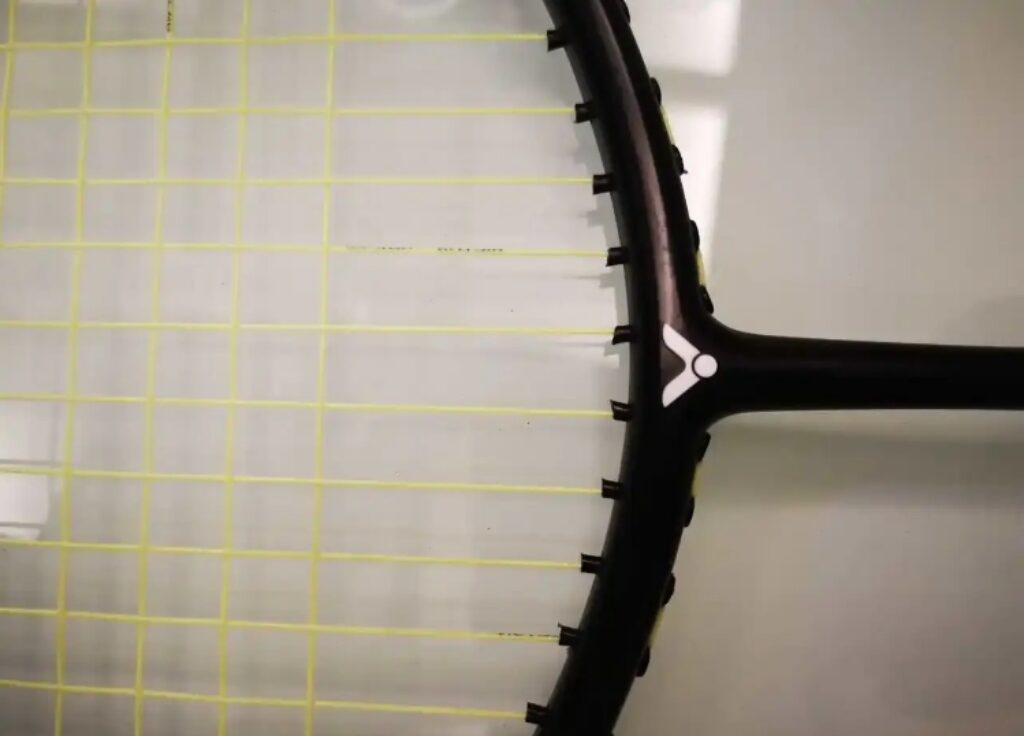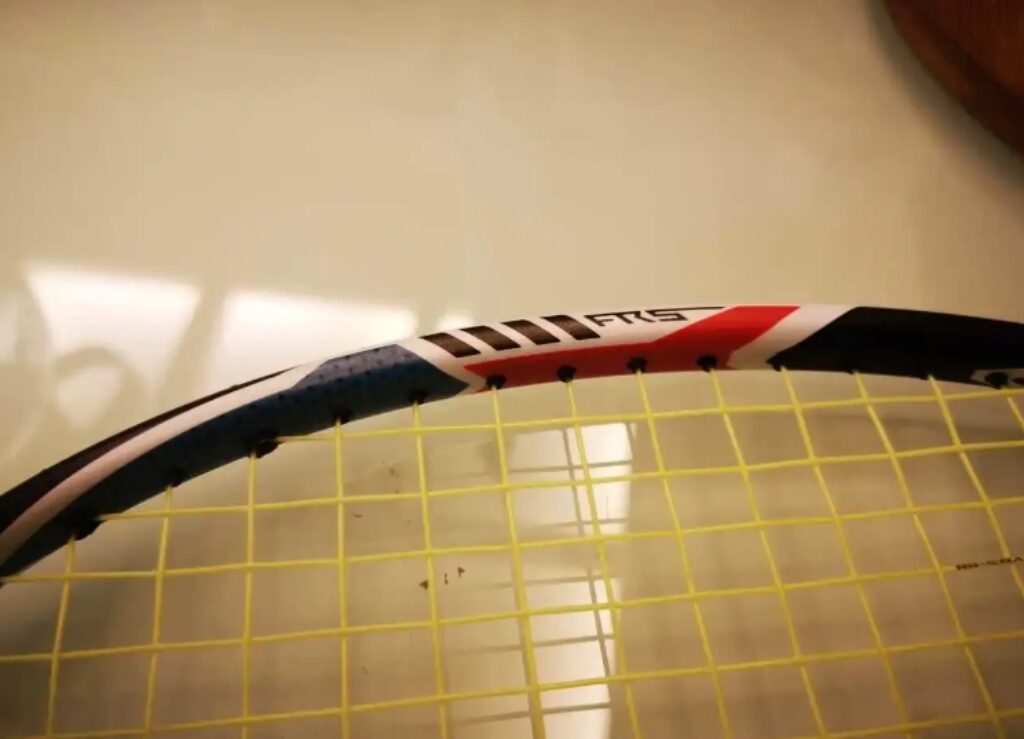HX high-end series has encountered bottlenecks due to acquisitions, and the hx500p/c is in very low supply. If anyone has a good price source, please recommend it.
Since the high-end models are unavailable, adjusting the mood with an affordable entry-level model is a good option. I picked up an hx20h at a “why bother with a bicycle” price—hopefully, there will be some surprises.

Specifications:
4UG5, full setup weight without base grip is 86g, balance point 295mm, 6.8mm shaft, 210mm length, slightly soft tuning, 10-4 string groove, diamond aero frame, strung at 25 lbs with bg80p/vbs68.
In terms of technology, it’s all familiar. Players from the Nano 7 era should be no strangers to this, borrowing from the main Iron Hammer series and using FRS for high tension durability. After all, with an “H” suffix, the racket is guaranteed to withstand up to 35 lbs. The design is youthful, with a white base and blue-black stripes. As an entry-level racket, it’s visually appealing. You can tell that some thought went into its design, like with the Iron Hammer, and it’s visually richer than the YU1L. However, the paint quality might be lacking—it chips easily, and the cone tends to blacken.

Swinging it feels nimble. Although the reduced wind resistance from the diamond frame isn’t much, the 4U balanced racket doesn’t demand much power, giving a sense of control due to its light swing weight. With this user-friendly setup, beginners likely won’t struggle with swinging it. The shaft is on the softer side, easily flexing during swings, but not to the point of feeling unstable like the Iron Hammer. Considering the 7.0mm shaft is a standard for Victory’s entry-level rackets, there’s not much else to add.
On the court during warm-up, it took some getting used to since I’ve been playing less with balanced rackets lately. The power didn’t feel quite right on clears at first. Honestly, while the shaft is easy to handle, you still need to put in extra effort to get good depth and trajectory due to the light head. Given the string bed has been tied with bg80p for over a year, switching to a more elastic string helped—things improved with fresher vbs68 strings.

In doubles, the racket is genuinely easy to pick up. During mid-to-front flat drives, the nimbleness shines through, and while the shuttle doesn’t fly off explosively, the racket follows your reactions well, supporting slightly more aggressive exchanges. As for net kills and blocks, as long as you make small, precise movements, it delivers decent results for windshield-wiper actions. Despite being an entry-level racket, it performs like a superlight racket in fast-paced exchanges.
However, in the backcourt, the smashing power is lacking. The racket is very forgiving, and with correct technique, you can execute smashes with minimal effort, but the speed and power are average, with a noticeable reduction in force. For balanced rackets, the lack of head weight means that power transfer relies more on the shaft’s elasticity, which leaves room for improvement in this entry-level shaft. This also explains why head-heavy entry-level rackets like the Iron Hammer feel more elastic and generate heavier smashes. The threshold for smashing isn’t high, and the feeling is decent, but the quality of the shot isn’t impressive. Pulling higher tensions on the HX20H doesn’t significantly enhance this either.

This classic frame shape still provides a stable feel and is easy to adapt to. At the net, there’s confidence in touch shots, thanks to its hold, even though it has the “soft” feel criticized in the Nano 7. Defense and smash returns are also comfortable.
Another well-behaved, responsive entry-level racket. Honestly, it plays like a younger, more durable Nano 7. Compared to the hx7sp, the cost-performance ratio is indeed good, and it’s worth recommending.


Leave a Reply